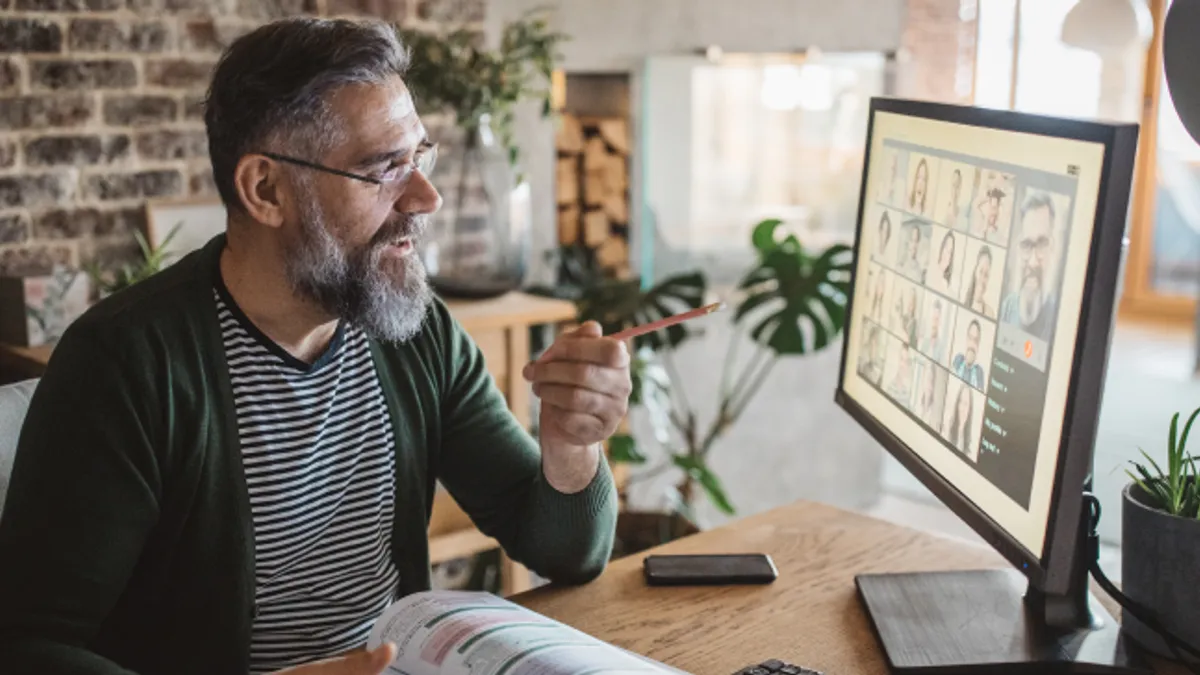Today’s learning environments are placing an increased emphasis on flexible and interactive technology. From purely remote learning to hybrid learning, the pandemic has accelerated all modes of online teaching and learning experiences.
In its early days, the global pandemic sent 1.4 billion students — 82% of all enrolled learners — learning from home, according to UNESCO. As a result, educational technologists and AV/IT managers have been working together with faculty to optimize pedagogies for online learning, as well as to provide technology solutions needed to fully engage students and help ensure positive learning experiences and outcomes.
As we look toward the future of education, it’s clear that AV technology will continue to play a crucial role in facilitating learning by providing greater flexibility for in-person, remote and hybrid learning experiences. To meet this need, Panasonic’s virtual experience configurations are being used to capture and share class materials in ways students can digest, whether learning from home or the classroom. With entry, standard and advanced options for various budgets and needs, the virtual experience configurations include Panasonic’s professional grade displays, PTZ cameras, wireless microphones and mounting accessories, which all work seamlessly together to keep students engaged.
By providing an end-to-end solution, Panasonic’s virtual experience configurations help standardize learning environments to create an easy-to-use solution for educators. For students, these virtual experience configurations ensure that professors and teachers are visible and audible, helping them absorb and understand course materials.
Shooting for a stellar hybrid learning experience
In partnership with renowned educator Dr. Sonny Magana, Founder and CEO of Magana Education, Panasonic has developed Project Moonshot EDU, an initiative designed to help education institutions leverage research-driven online teaching strategies to measurably accelerate student learning.
Project Moonshot EDU uses Dr. Magana's T3 framework for innovation, which integrates modern teaching tools with best practices in education. "Our intention is to package AV tools with the T3 Framework’s concrete strategies, protocols and resources so that our AV equipment is not just used but used in the most reliable way possible to improve learning outcomes," says Darryl Krall, National Sales Manager at Panasonic.
T3, which is listed in the Oxford University Encyclopedia of Education, takes teachers through three phases in their technology development:
- Translation: The first focuses on translating existing manual paper-based teaching practices onto technology platforms.
- Transformation: The second transforms students into teachers by articulating what they've learned using technology production tools.
- Transcendence: The third and final phase sees students use technology in their own unique ways to innovate by tackling topics and solving problems.
Educators can use these three phases to unlock the transformative benefits of hybrid classroom technology and to boost students' education in new and powerful ways.
"It’s not just about the AV; it’s about reliably and consistently improving remote and hybrid learning based on the research evidence on what works,” says Krall. The T3 framework is proven to double student productivity, and teachers have already applied it to their existing curricula following pioneering Project Moonshot EDU sessions in 2020.
The possibilities for hybrid learning are boundless. Panasonic is already working with schools to promote esports as a learning and team building activity that will engage students in hybrid environments. It also serves as a recruiting tool for STEM and STEAM (STEM with arts) students, opening up teaching opportunities across a wide array of disciplines.
For many educational institutions, however, the first task will be to put the right tools and techniques in place to foster sustainable long-term hybrid learning opportunities. Then, they must help those students who have been struggling with makeshift distance learning environments to catch up and feel comfortable with the material in their curricula. As teachers get access to the technologies and teaching patterns to support hybrid learning, they'll be able to create the classroom of the future, today






